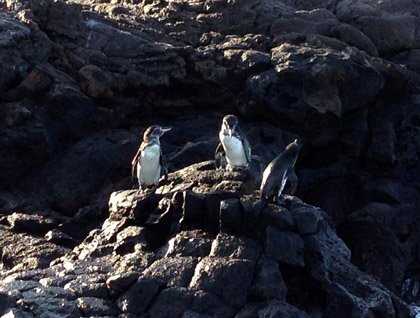Our expedition continued navigating at the central part of the archipelago, where two of the smallest and most beautiful islands, Bartolomé and Sombrero Chino, were our destination. They looked barren with no vegetation, because geologically they are newer, compared with Espanola and Floreana which we visited a few days ago.
We started the day early in the morning, at 6:30 a.m., with a visit to the top of Bartolomé. We started walking along wooden steps with the mission to get to the summit of the island. This invigorating hike is one of the most beautiful, since this Island is full of volcanic features, such as dry lava flows, tuff cones, giant spatter cones, and lava tubes. There are nearly 400 hundred steps to the top, and I think one barely feels them because of the distracting beauty of these unique attractions and landscapes.
After a well-deserved breakfast, we landed at a golden beach with crystal clear waters. With excellent weather conditions, a group of guests had great time snorkeling and swimming around the Pinnacle Rock, while some guests decided to just have a leisurely morning sunning at the beach. Others went for glass-bottom boat rides, to observe tropical fish, sea lions, and the incredible Galapagos penguin.
In the afternoon, we dropped anchor at Sombrero Chino Island. This island is the dream of a geologist, because it is considered to be one of the largest spatter cones in the world. This island is located off the eastern coast of Santiago Island. Here, we organized deep water snorkeling trips as well as beach outings, shortly afterwards followed by Zodiac rides. The flora and fauna of the area is well adapted to live on a desolated lava field, where it seems life could not be possible—but in the Galápagos, it is demonstrated that the most extreme habitats species can thrive. Some of the highlights of our day’s visits were the Galapagos penguins, marine iguanas feeding on algae under water, sea lions, as well as white-tipped reef sharks.







